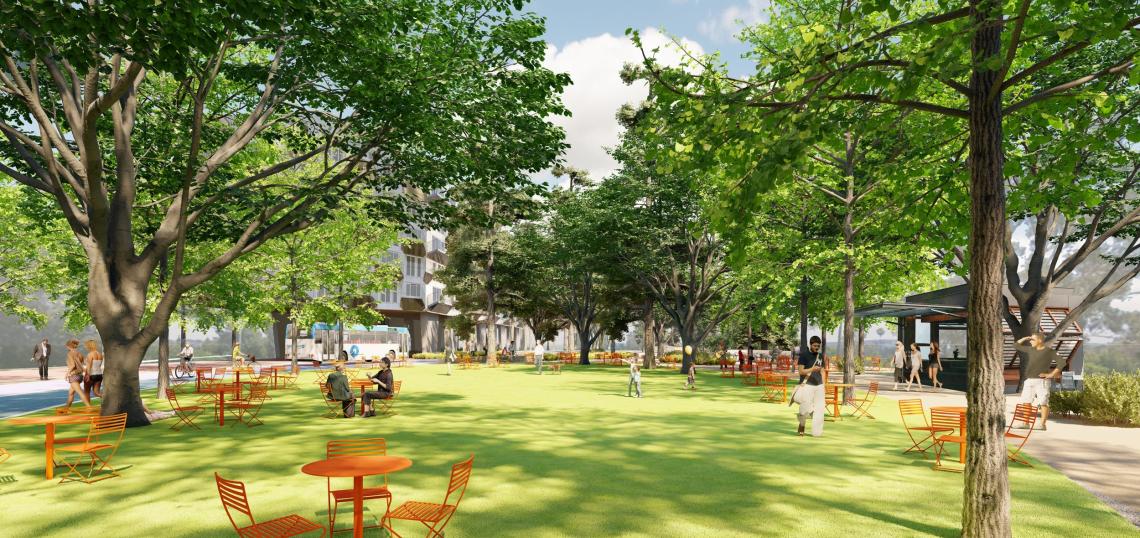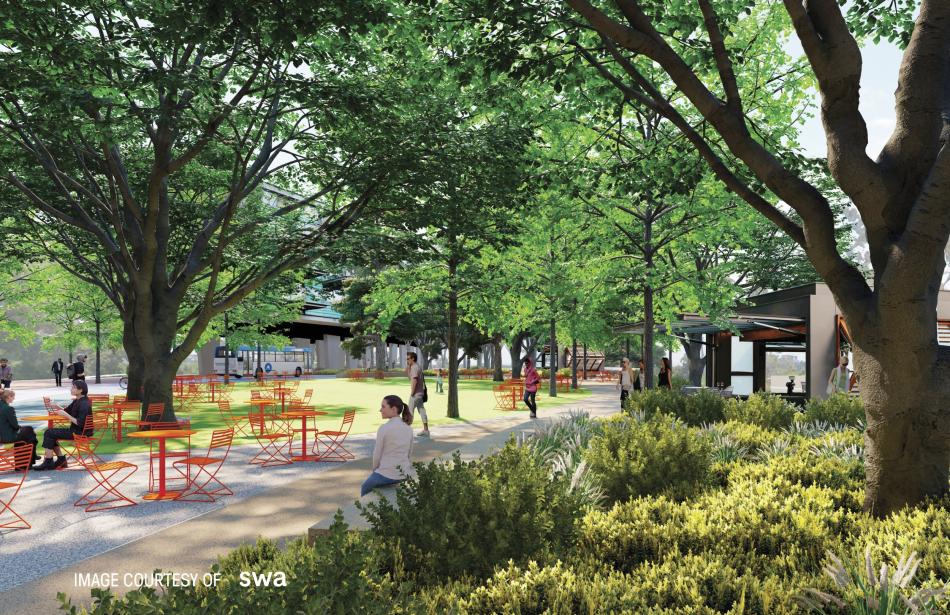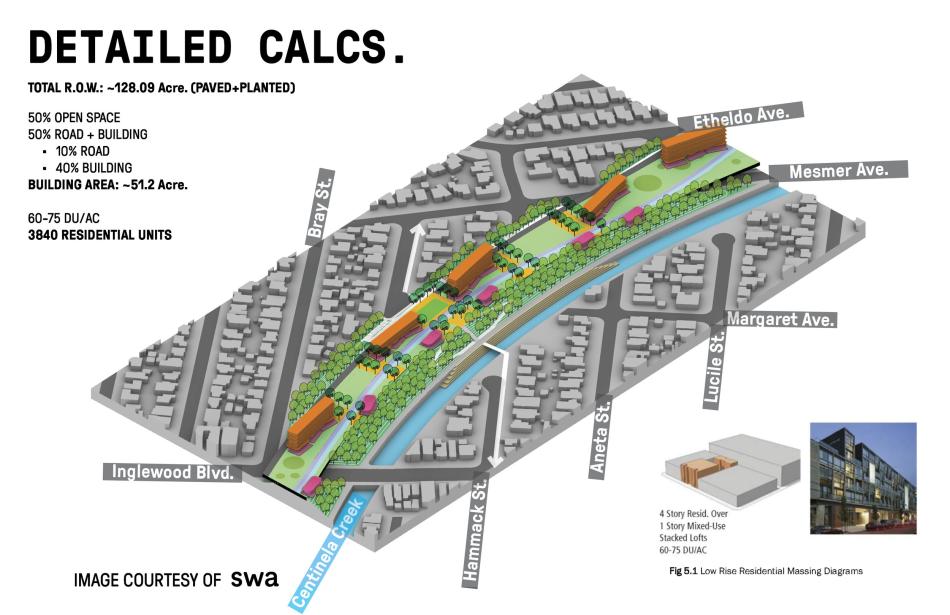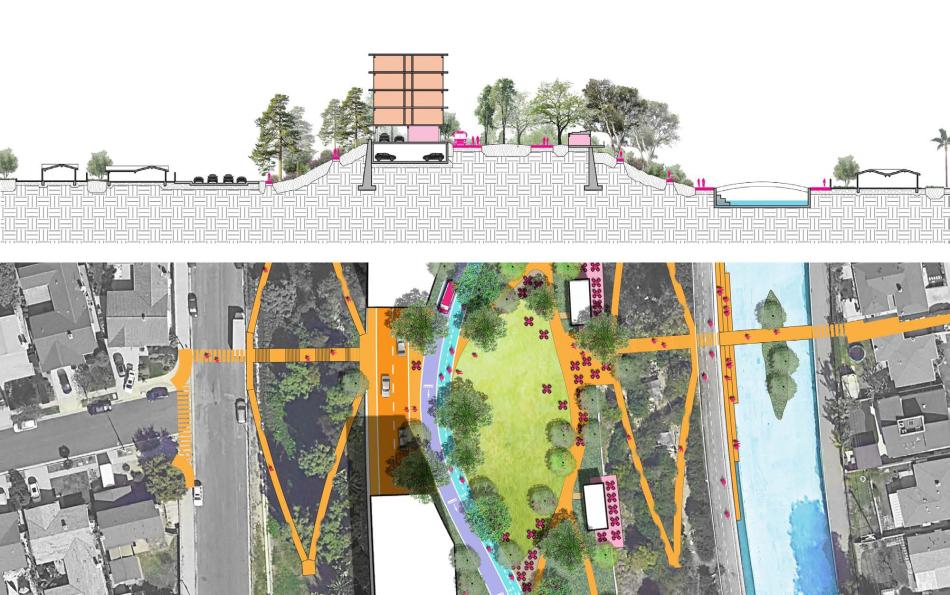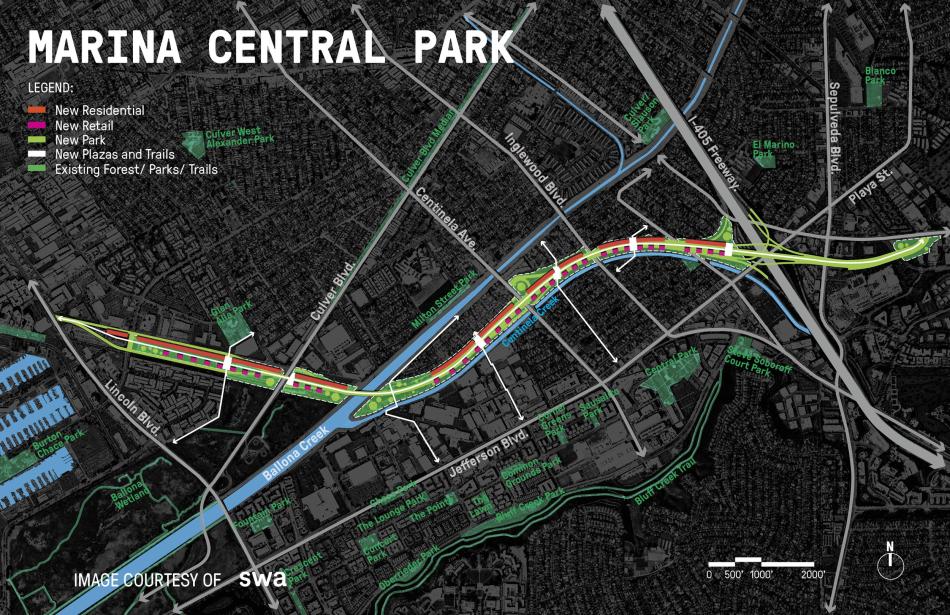Across Southern California, remnants of never-built freeways dot the landscape. The extra-wide median of the 101 in Silver Lake was once intended to connect with the Beverly Hills Freeway, while the grade-separated stretch of La Cienega Boulevard through Baldwin Hills was planned as part of the Laurel Canyon Freeway.
Among the larger remnants of L.A.'s unfinished network is the Marina Freeway, which you may also know as the 90. Originally intended as the starting point of the Slauson Freeway, plans called for a roughly 50-mile route which would have stretched from Marina del Rey through Orange County. However, all that was built was a three-mile stub between Culver City and the Marina, which functions mostly as an extended on- and off-ramp for motorists heading toward the 405.
Pointing to the Marina Freeway's relatively sparse usage, transportation advocacy organization Streets For All and landscape architecture firm SWA Group have proposed a new use for the corridor: a public park.
The concept unveiled yesterday, dubbed Marina Central Park, calls for converting the roughly 128-acre right-of-way lined with nearly 4,000 new homes, as well as roadway with space for vehicles, bus rapid transit, and bikeways. Renderings show low-rise structures located throughout the park, standing five stories in height with commercial uses located at the first floor.
Likewise, the proposal calls for reconnecting the freeway corridor surrounding ecological resources such as the Ballona Wetlands and Centinela Creek, which is shown with new terrace decks lining the concrete channel.
Streets For All indicates that the project has already secured the support of several local elected officials including State Assemblymember Isaac Bryan, State Senator Lola Smallwood-Cuevas, and L.A. County Supervisor Holly Mitchell. The Del Rey Neighborhood Council has also thrown its support behind the proposal.
Currently, the project backers are looking to secure funding to complete a feasibility study for Marina Central Park - a process which would take roughly one year after starting. The overall project could take a decade to complete - contingent on ever elusive funding.
While demand for new open space projects often exceeds available funding, new pots of money have become available to such projects. The Reconnecting Communities Pilot Program authorized by the $1-trillion infrastructure bill of 2021 was recently used by the City of Long Beach to secure $30 million in funding for the realignment of Shoreline Drive, and the same pot of money offers an opportunity for projects like the proposed freeway cap park near Union Station in Downtown Los Angeles.
Streets For All has also had some luck in securing local funding for its initiatives - such as when Culver City moved to provide funding for a feasibility study of a proposed extension of the Ballona Creek Bike Path.
Follow us on social media:
Twitter / Facebook / LinkedIn / Threads / Instagram




